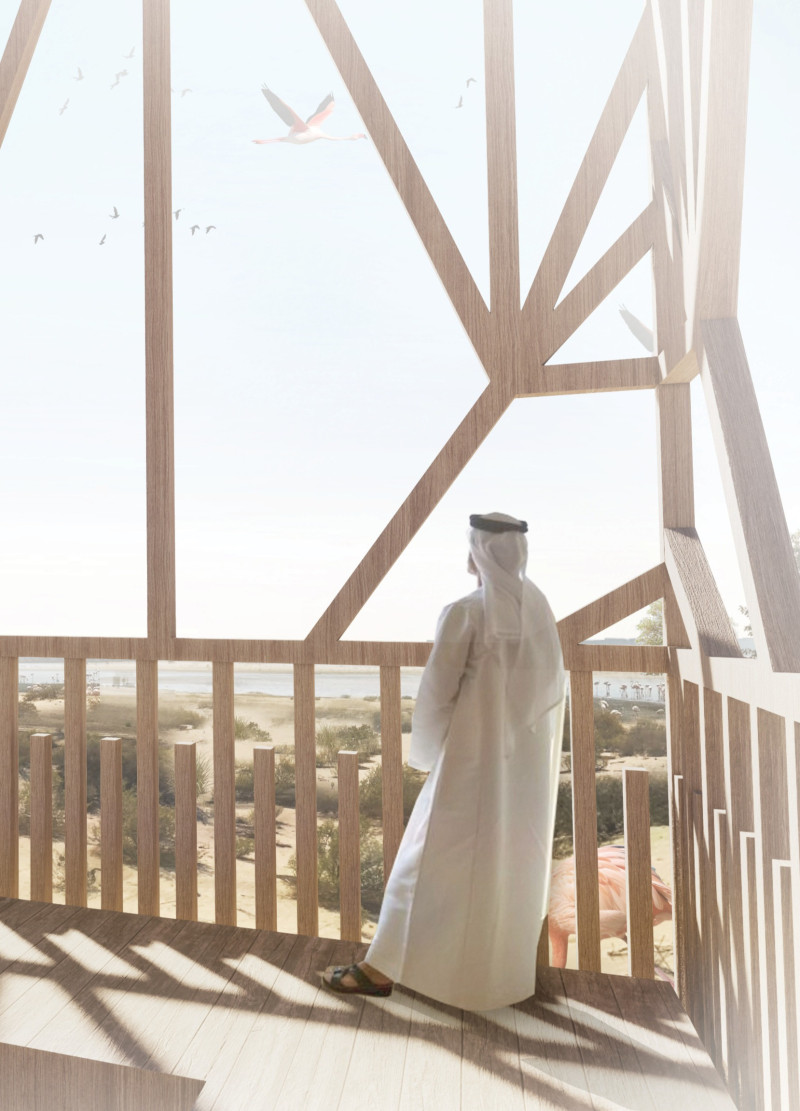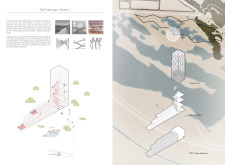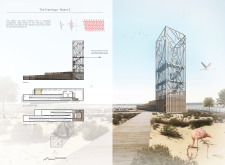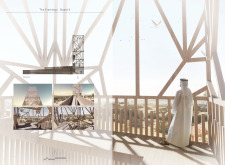5 key facts about this project
The Framingo is positioned within a wetland reserve and designed to enhance the experience of visitors while interacting with its natural surroundings. The tower takes cues from the local ecosystem, particularly the graceful shapes of flamingos, and translates these influences into a functional structure. Its design integrates elevated platforms and pathways that promote exploration while blending with the environment.
Design Concept
The design concept focuses on reflecting the natural pathways seen in the wetlands, particularly the delicate grass stems surrounding water bodies. The base and ramp of the tower guide visitors toward raised terraces, and ramps lined with slender timber sticks create a feeling of walking through grasslands. This element provides a direct connection between the architecture and the landscape.
Structural Elements
The slender frame extending from the highest viewing platform resembles the elegant legs of flamingos. This design choice strengthens the relationship between the building and the natural inspiration behind it. The patterns formed by flamingos when they gather are mirrored in the overall structure, adding visual interest and reinforcing its connection to the surrounding environment.
Materiality
The Framingo features a primary steel frame that offers structural support. This frame rests on a thick concrete raft slab, ensuring stability. A secondary frame is made from wood plastic composite, which includes a patterned metal mesh interlay. WPC is also used for decking, platforms, ramps, and stairs. This material choice promotes consistency across components while allowing for efficient construction practices.
Spatial Experience
The design encourages movement with elevated platforms that allow visitors to connect with the ecosystem. Open and shaded areas throughout the structure provide various experiences, inviting exploration and interaction with the environment. The thoughtful arrangement of spaces emphasizes the design’s lightness and elegance, reflecting the essence of the wetlands.
Significant design elements include shaded areas with openings that create different viewpoints. These features enhance visitor experiences while complementing an internal desert garden, fostering moments of reflection in a natural setting.





















































